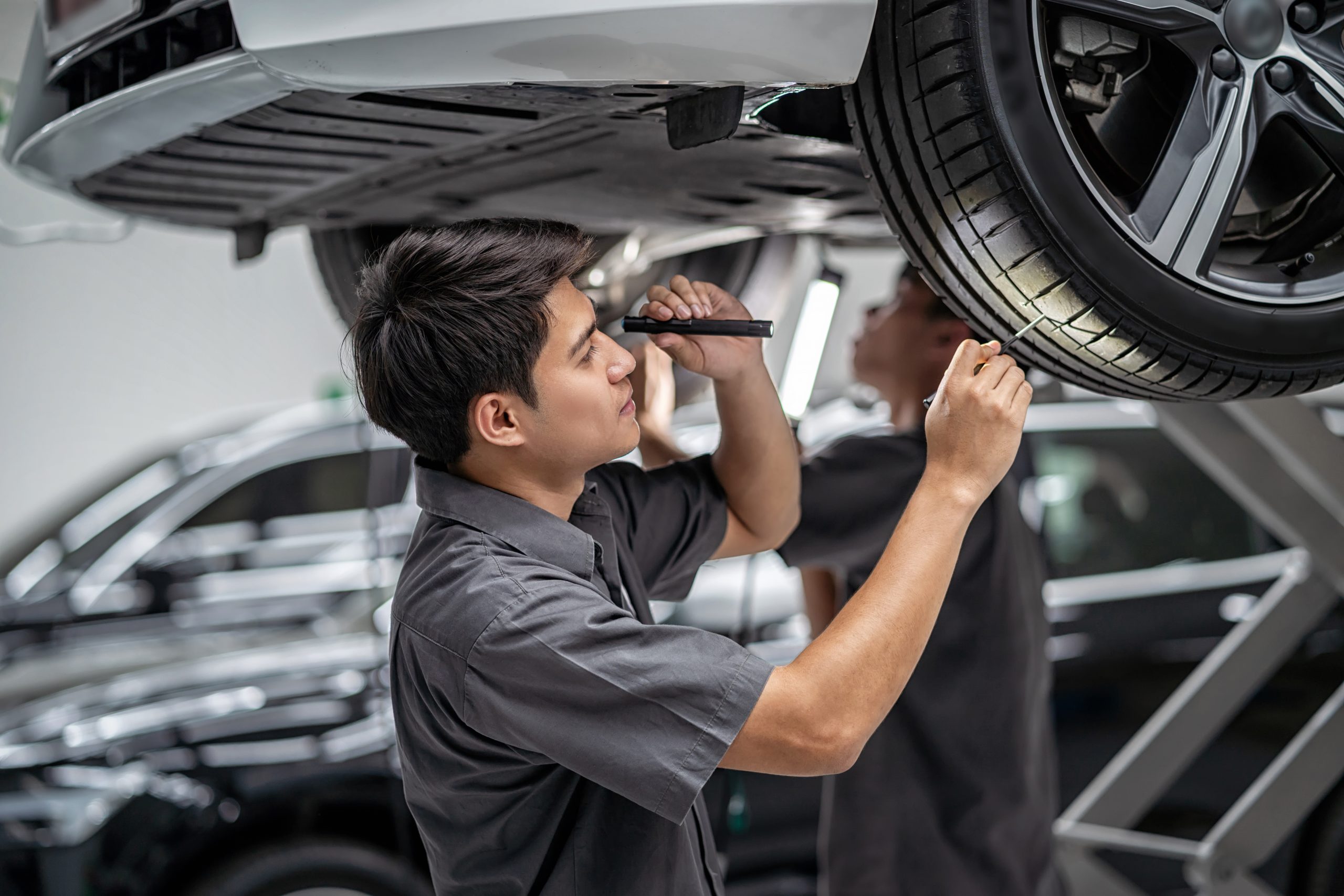

Keeping your vehicle tires well-maintained is essential to your driving performance and safety. Comprehensive tire maintenance includes more than just checking tire pressure or inspecting for tread wear. Periodic tire rotation, balancing, and alignment are also critical for the longevity of your tires. In this month’s blog, we outline a suggested tire maintenance plan to keep your tires in top shape.
Self-Maintenance Tasks:
There are two tasks that you can do yourself to maintain your tires:
- Check Tire Pressure: Most vehicles today are equipped with tire pressure monitoring systems (TPMS), which alert you when tire pressure may be low on your tires. However, it’s a good idea to purchase a tire pressure gauge and manually check the pressure. Use the manufacturer suggested PSI for the tires, which can be found on the inside of the driver door or by searching your specific tire and manufacturer online.
- Inspect Treads: When checking pressure, you can also visually inspect the tire treads for wear. If the treads are worn, you will not have as much depth in the treads. Take note of where you see any unusual wear and tear on the tires. Also, run your hand along the sidewall and feel for any damage. If you feel any bulges or tears, check with a service professional. How often should you check pressure and treads? These tasks should be performed monthly.
Service Professional Tasks:
- Tire Alignment: Your tires may easily become misaligned when driving on rough road conditions such as potholes, bumps, or even curbs. Tire alignment service is an adjustment to the suspension of the vehicle, so that the tires are at the right angle in their contact with the road. When your tires are misaligned, you will notice uneven wear on them. How often should you do a tire alignment? This task should be done at least once a year, or every 10,000 miles driven.
- Tire Rotation: Tread wear is a normal occurrence with your tires. If you do not rotate them, the wear will continue to degrade the tire. Rotation is the task of switching the tires so that the wear is more even across the tire. Typically, it is helpful to rotate the tires based on the suggested patterns within the owner’s manual. If there are different sized tires in the front vs. the back, you will only rotate the tires from side-to-side. How often should you do a tire rotation? Depending on the type of drive system (i.e. front, rear, or all wheel) in your vehicle, the tires may wear at different rates. To slow down the wearing, a tire rotation should be performed every 3,000 to 5,000 miles.
- Tire Balancing: Tire balancing is an adjustment of the tire weight around the entire tire. When the balance is off, you may experience vibration while driving. The balancing process returns the distribution of weight to normal and will result in better performance and an extended service life of the tire. How often should you do tire balancing? Balancing can be performed at the same time you are having your tires rotated. The typical timeframe for balancing is every 5,000 miles or twice a year.
Your vehicle tires are the only component of your vehicle that make contact with the road. Keep them well-maintained for driving safety and improved performance by incorporating a comprehensive tire maintenance plan into your maintenance protocol.
If you would like your tires checked, contact the service professionals at Colonial Service Station to schedule an appointment today.
